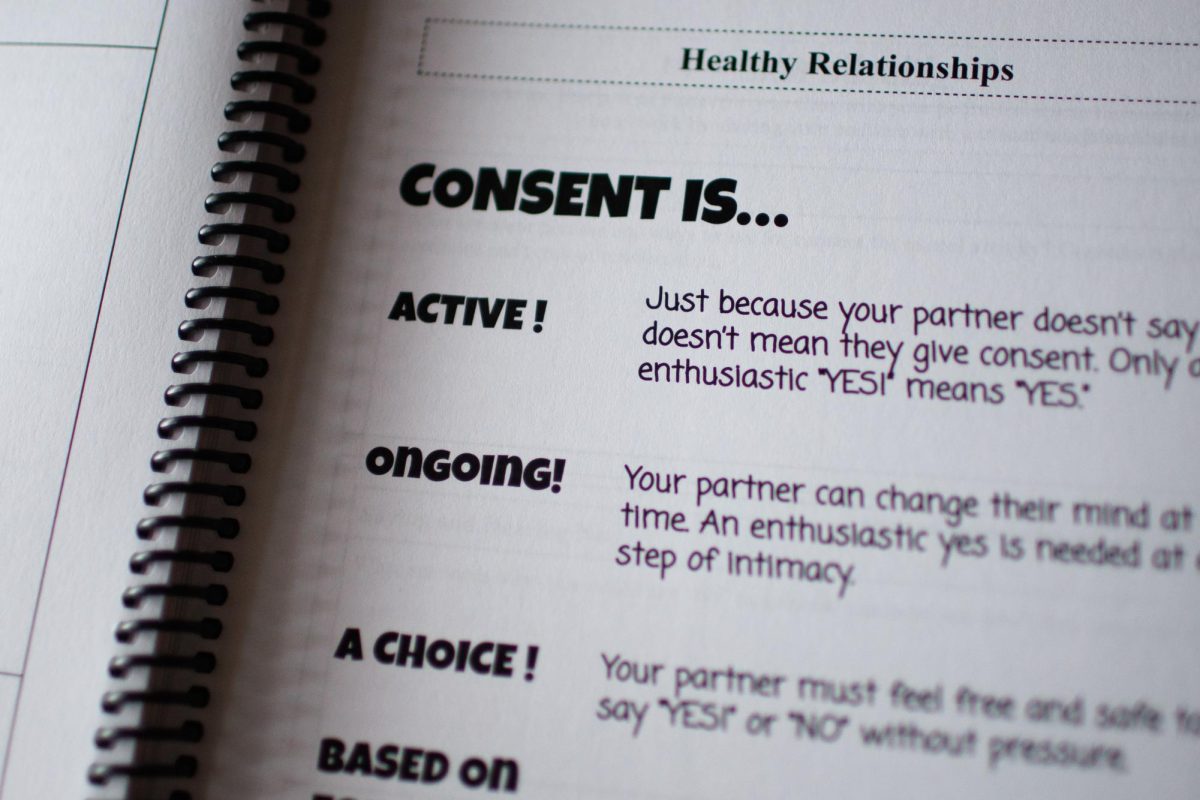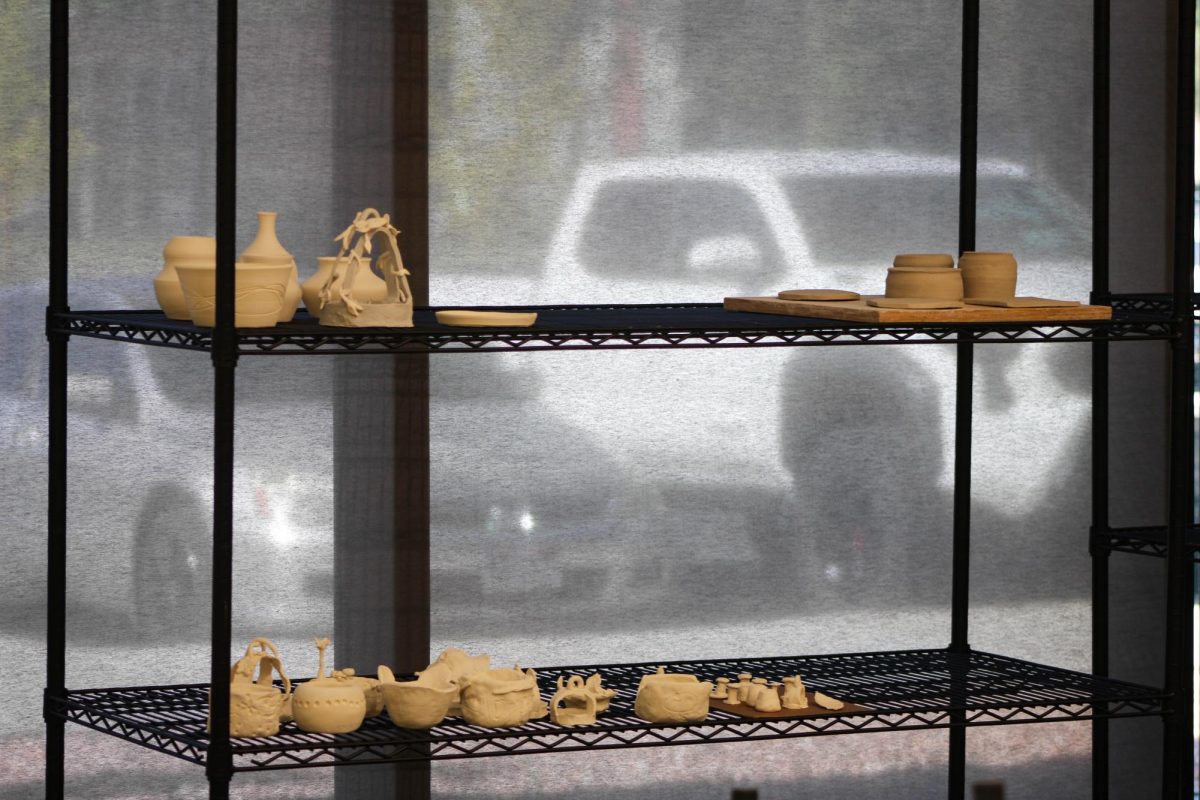A Fremont High School health teacher, Jared Romero, knows the shortcomings of sex education in Utah, which he’s been teaching for 11 years. Even though his daughter is only 2 years old, he decided it would be dangerous to leave her sex education in the hands of a school alone.
“I definitely will be teaching her,” Romero said. “That kind of communication needs to be open in the home, and I don’t think a child should be afraid to ask.”
Sex education isn’t taught to Utah students until they are sophomores in high school.
Utah is one of 10 states to approach sex education with an abstinence-only curriculum. Although safe sex and risk avoidance practices are mentioned, teachers are not allowed to get into specifics, such as how contraceptives work. This can cause serious implications for the students who aren’t being extensively educated, according to a study conducted by the National Institutes of Health.
The restrictions to Utah’s sex education can, in part, be attributed to the culture, being that almost half of the state’s population are members of The Church of Jesus Christ of Latter-day Saints, commonly known as Latter-day Saints (LDS) or Mormons, though the church does not accept the name Mormon anymore. The limited allowance of education that is given to students can be dangerous, increasing teen pregnancies, sexually transmitted infections, spreading misinformation and affecting individuals’ lack of knowledge into adulthood, according to studies and professionals who work in the field.
What is taught in sex ed?
Utah’s sex education is determined by the state board and must follow a set of legislative rules when deciding the curriculum. Utah state law requires sex education to:
– Stress the importance of abstinence from all premarital sexual activity.
– Stress the importance of fidelity within marriage.
– Stress personal skills that facilitate these choices.
While the list of can-talk-about is short, the list of restrictions the curriculum must avoid teaching is more extensive. Utah state law prohibits sex education from including:
– The complexity of intercourse.
– The intricacies of sexual stimulation.
– The mention of erotic behavior.
– Advocacy of premarital or extramarital sex.
– Encouragement of the use of contraceptives.
Lawmakers think that anything beyond this should be taught at home. According to the Utah Constitution, it is a parent’s “fundamental right” to be the primary educators of their children.
This comes up the most with sex education, according to one of the state’s independent newspapers, The Salt Lake Tribune, with many insisting that the topic is private and sensitive and best left for at-home discussions.
This is reiterated by an FAQ on the Utah State School Board’s website, saying, “Parents should be the primary source of sex education instruction and values relating to this subject.”
Why is the curriculum so strict?
Utah’s abstinence-based curriculum is in part due to the culture of the state, the culture being predominantly religious. A 2024 survey by the University of Utah found that 76% of Utahns were affiliated with a religious institution; three-quarters of that population, about 42% of Utah residents, are members of the Church of Jesus Christ.
While the curriculum may not be catered to members of the church specifically, there are undeniable similarities between Utah sex education laws and the beliefs of the Latter-day Saints.
“Obeying the law of chastity includes abstaining from all sexual relations before marriage and remaining completely faithful and loyal after marriage,” said Dale Renlund, an apostle for the church, in an article on the international church’s website.
The Church of Jesus Christ speaks about premarital sex and infidelity in a profoundly negative manner, even going so far as to say that it is one of the worst sins one can commit, second only to murder, according to the book of Alma in The Book of Mormon. These opinions influence the heavily conservative culture and seep into comprehensiveness of Utah’s sex education, according to the Salt Lake Tribune.
What does this mean for the students?
The church strives to achieve purity and chastity by implementing their rules about sex, something that is vital within the religion. However, the abstinence-only culture, coupled with the abstinence-only based curriculum, deprives students of the education needed to safely engage in sex when they’re ready, claims Heather Garcia, a Utah mom who received her sex education in Northern California, which provides a comprehensive curriculum.
The negative impacts of an abstinence-only sex education are ongoing. By limiting the breadth of what is taught to students, they become at risk for pregnancies, STIs and misinformation. Garcia also believes that Utah’s limited sex education can linger into adulthood.
Teen pregnancy and STI rates
According to Utah’s Department of Health and Human Services most recent available numbers, in 2022, 9.2 of every 1,000 girls between the ages of 15 and 19 gave birth to a child. These numbers are down significantly from their most recent peak in 2018, when 13.1 females of the 15-19 age range gave birth to a child.
While the numbers don’t top the nation’s charts, they don’t sit at the bottom either.
Congress reported the state with the lowest teen pregnancy rate to be New Hampshire, with 4.6 females ages 15-19 bearing children in 2022. While New Hampshire does emphasize the importance of abstinence within their curriculum, there is one major difference between what is taught there as opposed to Utah: sexual behavior.
Utah’s laws prohibit speaking on sexual behavior when teaching sex education. However, New Hampshire’s lower teen pregnancy rate may suggest that there are benefits in expanding the breadth of the curriculum, even if it’s only so far as to speak on sexual behavior.
Sexually transmitted infections in Utah tell a similar story; while the state does not make the nation’s top five, it also does not make the bottom five.
In the most recent available numbers, Utah had 14,861 reported cases of STIs in 2022. Chlamydia and gonorrhea have been on the decline from years past, but syphilis numbers continue to rise.
Although Utah succeeds in remaining out of the highest teen pregnancy rates and STI rates in the nation, the fact that they don’t hold up the back of the line on the bottom of the chart indicates that individuals are having premarital and extramarital sex, despite the sex education they have received.
Misinformation
Because of the minimal information that gets shared about sex education within the classroom, it becomes easier for misinformation surrounding intercourse to spread. A prime example of this is soaking.
Soaking is what the Urban Dictionary describes as teenagers’ way of getting around the strict sex rules of their religion, predominantly the Church of Jesus Christ. It happens by inserting a penis into a vagina and simply lying still rather than thrusting, sometimes recruiting a third person to jump or kick on the mattress, simulating the motions of sex.
As social media has spotlighted this practice, more and more teenagers believe that soaking does not carry the same risks that intercourse does, according to social media posts. They are not taking measures to protect themselves against pregnancy and STIs, as they don’t believe the implications of sex can apply to soaking.
This misconception has crept from teenagers to college students, as social media has shown that some students at Brigham Young University have taken it upon themselves to soak as a way to get around the strict honor code at the college.
BYU, a private university funded by the church, prohibits premarital sexual relations, saying students should “live a chaste and virtuous life.”
Garcia believes this is just one example of the misinformation that spreads through word of mouth among teenagers and adults who aren’t extensively educated on the topic of sex.
Uneducated adults
The sex education provided in Utah high schools lacks depth and breadth, but the effects of the undetailed education can bleed into adulthood for some.
The issue of Utah’s sex education stretches beyond the teenage years of making uneducated guesses of how to evade pregnancy and STIs. It reaches the corners of adulthood when making the intentional decision of starting a family.
“I know a friend of a friend that had a good, traditional LDS upbringing [and] a temple marriage, and they couldn’t figure out why they weren’t getting pregnant. They were doing some things not the right way, we’ll just put it that way,” Garcia said.
“Even those who intentionally wait still have issues because they’re not even being taught. So, that when they are ready finally, even in adulthood, they still don’t know what they’re doing. They either don’t get pregnant or do get pregnant, not knowing what the issue is, and it’s just mind-blowing.”
A better education
Many parents, teachers and students agree that by stressing the importance of abstinence as the main form of birth control, individuals are done a disservice.
“Abstinence only … I don’t know if that’s always effective because we’re not able to provide them with all of the information that we can for a young person to make an informed decision,” Romero said. “By making some topics taboo or sensitive to talk about, then it doesn’t get brought up, and they’re left to figure it out.”
Garcia fears for the well-being of students who receive the sum of their education from school.
“Abstinence-only sex education is pointless because it’s not education — it’s more ideology,” Garcia said.
Garcia’s 15-year-old son, Rayne, echoes this statement by saying that the way that sex education is set up fails to teach him anything. Garcia is grateful to have built a relationship that fosters these conversations.
Romero, encourages all parents to be as open with their children as Garcia is with hers.
“If we’re more open with talking about everything, then they’ve probably already thought about it, and they’re more likely to make an informed and responsible decision,” Romero said. “As a male, I wasn’t asking those kinds of questions to anyone, but I would hope that I could have that relationship with my daughter.”
Editor’s note: This story has been updated to clarify Heather Garcia received her sex education in California.






















